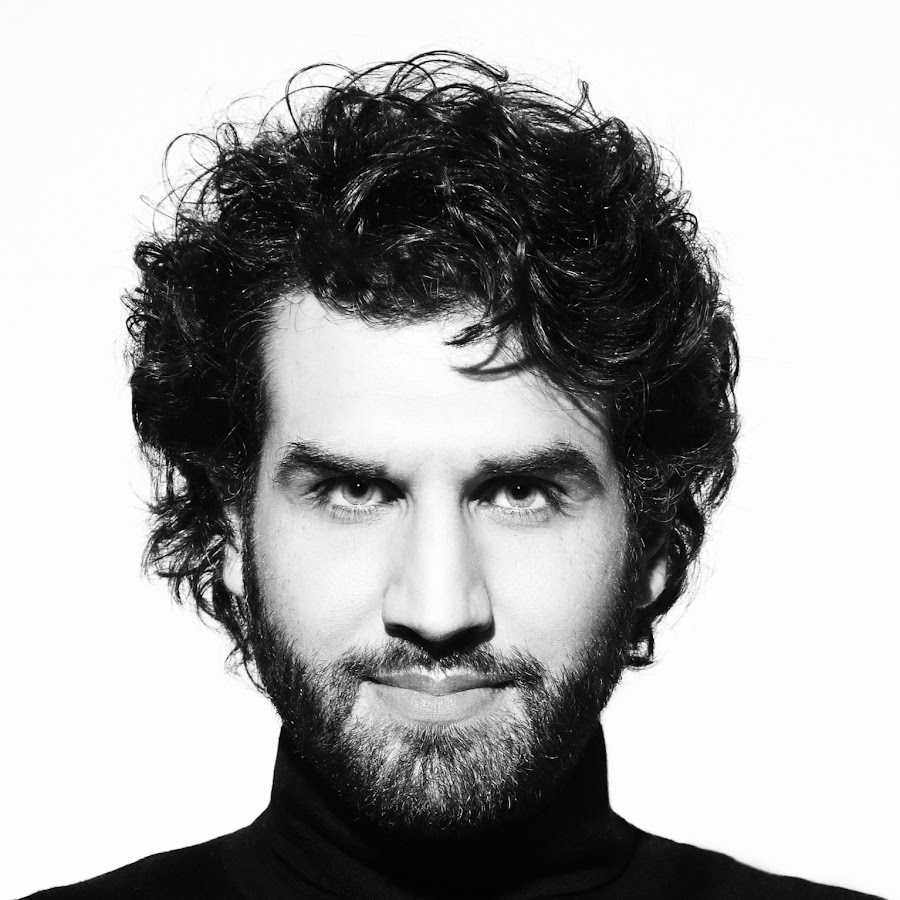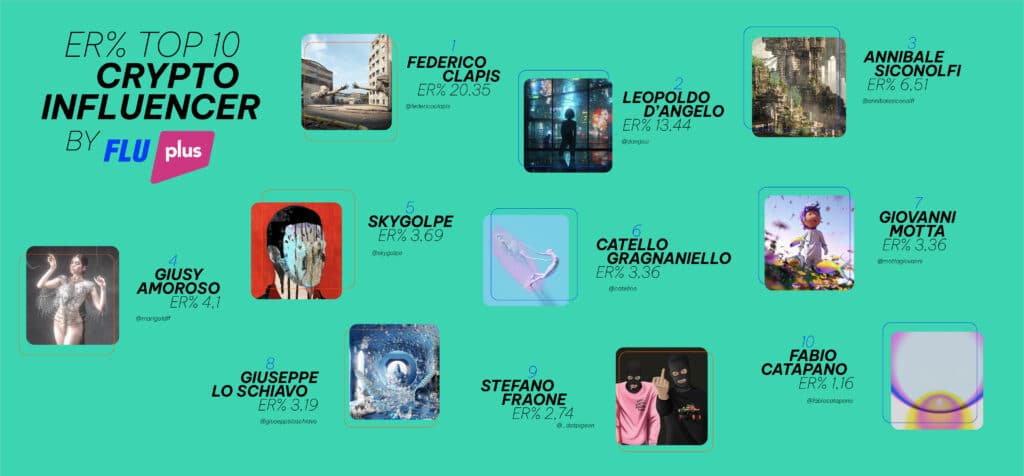If you’ve been browsing the Internet for a few years, it’s probably the name “Federico Clapis”Tells you something. Some time ago they were a YouTuber with thousands of fans, today she is an artist, an author, a performer. AND a crypto influencer
Here, perhaps this last term could be a little darker than the others.
So let’s take a step back.
The crypto art – which in Italian is also called cryptoart or cryptographic art – is a category of art linked to the blockchain, the same technology on which bitcoins are based. However, this does not imply that it is all virtual. In reality the creations can be both totally digital works and digitalized physical works. And the certificate is digital too – theNFT (non-fungible token) – that certifies the ownership and authenticity of the work.
 Chiara Dal Ben Marketing Innovation Director of FLU
Chiara Dal Ben Marketing Innovation Director of FLU
“The first forms of Crypto Art were born between the mid and late 2010s, but as we can imagine they represented a truly niche genre of artistic work. – explains Chiara Dal Ben, Marketing & Innovation Director of FLU – Over the past two years this art form has grown considerably thanks to the rapid international spread of Blockchain networks, now in the public domain, thanks to the interest of the most important world auction houses, from Christie’s to Sotheby’s, and thanks to the easy possibility offered by crypto-technology for pure works of ‘digital art to be bought, sold or collected by anyone who wants it in a decentralized way. “
“The Blockchain and NFTs have opened up a whole new territory for contemporary digital native art and any type of artifact, digital or physical. – continues Chiara Dal Ben – The values on which they are based are valid in terms of disintermediation, community, ownership control, revenue sharing with the artist, freedom to exist in an open field without limits of gender, race, class and country of origin. Like any market that grows rapidly, in a new and constantly changing situation, and makes it possible for everyone to generate profits very quickly, it is therefore important to define rules that can preserve the original principles, bringing the artist and his work back to the center. “
The birth of crypto-influencers
In this scenario, the crypto influencerartists who have decided to sell their digital works online and who are gaining increasing popularity precisely because of this choice.
 Federico Clapis
Federico Clapis
Ok, said that it might seem a bit vague so let’s take a concrete example.
Federico Clapis has digitized his work “Tank Fish”And sold it for a figure that is around 70.000 euro.
“I started taking an interest in the NFT world for lighten all my artistic production from the weight of the material. – Clapis said – I found it the only solution, but not only to make it flourish, but I also find the solution for the entire art market itself. So I could only take this opportunity as soon as I heard about it, from the dear artist and dear friend Giovanni Motta in November 2020.
Often from outside this world it can seem like just a speculative act for creative traders who love to trade images. The thing that not everyone knows, however, is that there is often a real passion among collectors. It is a much more ‘romantic’ journey than you think, a very cohesive community united by thirst and the desire to see the future come true. “
Federico Clapis According to research based on data from FLU PLUS, FLU ‘s integrated suite of influencer marketing is the most influential Italian crypto artist of the moment but it is not the only one.
In second place we find Leopoldo D’Angeloin art Dangiuz: “I have been producing digital art for more than 10 years, but my approach with NFTs dates back to June 2020, when I was contacted by a guy via email who gave me a brief introduction and told me about it. opportunity to be able to sell my works through this technology, precisely the NFTs, and to try to “mint” (technical jargon to say “insert on blockchain”) my first job. In those days, however, I was very busy with both work and family situations, so I didn’t immediately “become part of the NFT world”, but I began to study it, to be interested and to understand how it worked. Then, several months later, in February 2021, I uploaded my first work as an NFT.
Once the embryonic stage is over, ‘it’s just a trend!’ in many ways and areas), we can finally focus on how physical and digital can both make use of this new technology. For example, many museums and galleries, both in Italy and abroad, have already welcomed initiatives regarding exhibitions of digital artists with open arms. “
To complete the top 10 influencer NFT & crypto art per engagement rate of FLU we find Annibale Siconolfi (@annibalesiconolfi), Giusy Amoroso (@marigoldff), Skygolpe (@skygolpe), Catello Gragnaniello (@catelloo), Giovanni Motta (@mottagiovanni), Giuseppe Lo Schiavo (@giuseppeloschiavo), Stefano Fraone (@_dotpigeon) and Fabio Catapano (@fabiocatapano).

All these artists have not only captivated the attention of the art world but also that of marketers: “The evolution of the Metaverse has also accelerated the notoriety of crypto artists. – says Chiara Dal Ben – In the last semester crypto influencers have become an integral part of branding projects and they are called to co-create NFTs together with companies.
Among the most interesting aspects is the fact that NFTs help to create a virtual identity, to feel part of a community and they’re not just digital files, but a way to provide followers with access to experiences others can’t.
Brands can use them to open up to new advertising frontiers, get closer to a target that experiences digital in a different way from the past, to transform an event into a unique experience and to create digital and innovative user experiences on a global scale and with a high value impact. “
And you, have you already thrown yourself into the world of crypto art and NFTs? Have you already started following crypto influencers?















Leave a Reply
View Comments